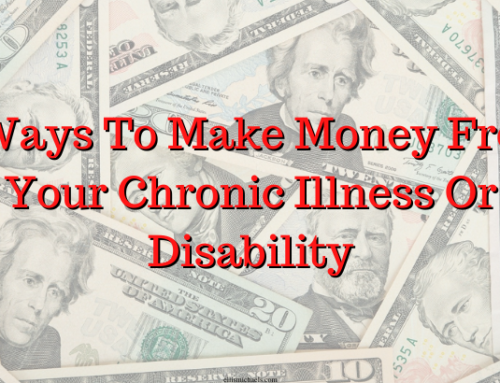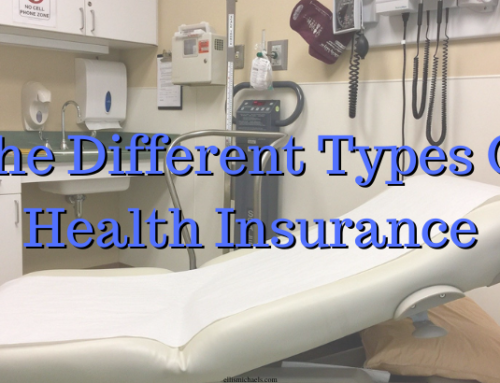Living with any chronic medical condition can be tough. But living with an invisible illness is even harder.
Invisible illnesses present all kinds of challenges that more visible diseases do not. In this article, we’re going to take a look at some invisible illnesses and the challenges they often present. But first, let’s see what exactly an invisible illness is.
What is an invisible illness?
Table of Contents
To put it simply, an invisible illness is any illness that isn’t easy for others to see. While it’s obvious to the person who has the disease, its symptoms are not easily observable by anyone else. Pain is an example of an often-invisible symptom. Unless there is an obvious sign of trauma, other people usually can’t directly observe how much pain you’re in.
Invisible illnesses are sometimes referred to as hidden illnesses or non-visible illnesses. And get this: a whopping 96% of illnesses are invisible!1 That might seem high, but it’s true. The vast majority of illnesses show no outward signs or symptoms.
Almost any type of illness can be invisible. From autoimmune diseases to mental illnesses and everything in between, a lot of diseases are not visible to anyone other than the person suffering from them. We’ll take a look at some specific invisible illnesses shortly. But first, let’s see how invisible illnesses are different from invisible disabilities.
What is an invisible disability?
 Like invisible illnesses, these show no obvious outward signs or symptoms. What makes invisible disabilities different than invisible illnesses is that they impair activities of daily living (ADLs). Examples of ADLs include eating, bathing/showering, grooming, going to work, and leisure activities.
Like invisible illnesses, these show no obvious outward signs or symptoms. What makes invisible disabilities different than invisible illnesses is that they impair activities of daily living (ADLs). Examples of ADLs include eating, bathing/showering, grooming, going to work, and leisure activities.
Invisible disabilities are sometimes called hidden disabilities, or non-visible disabilities (NVDs). It’s estimated that about 10% of people in the United States have an invisible disability.2 An example of an invisible disability might be someone who has impaired vision but does not wear glass or carry a cane. Just by looking at them, you’d never know they were disabled.
Now that we’ve defined what invisible illnesses and disabilities are, let’s take a look at some specific conditions.
Invisible autoimmune diseases
Let’s begin by looking at some autoimmune diseases that often show no obvious signs or symptoms. Hmmm, where to start? I know: I’ll start with the mostly invisible autoimmune condition I’ve been living with my entire life: Behcet’s disease.
I was diagnosed with Behcet’s when I was sixteen but had symptoms my entire life. And most of those symptoms have been invisible to others. Joint and muscle pain, oral and genital ulcers, weakness, tiredness, anxiety, and depression are just a few of the invisible symptoms I’ve experienced over the years.
Behcet’s disease is just one of many autoimmune conditions that are largely invisible. Autoimmune diseases are illnesses where the immune system produces antibodies that attack healthy tissue.3 Normally, the immune system’s job is to fight off foreign threats like viruses and bacteria. But for those of us living with autoimmune diseases, our immune systems not only attack foreign threats – they attack us!
There are more than 100 different autoimmune diseases and between 3-5% of the population have been diagnosed with one.4 The vast majority of these illnesses are invisible. Some of the most-common autoimmune diseases include:5
- Addison’s Disease
- Celiac Disease
- Graves’ Disease

- Inflammatory Bowel Disease (Crohn’s Disease & Ulcerative Colitis)
- Multiple Sclerosis (MS)
- Myalgic Encephalomyelitis/Chronic Fatigue Syndrome (ME/CFS)
- Pernicious Anemia
- Psoriasis (Psoriatic Arthritis)
- Rheumatoid Arthritis (RA)
- Sjogren’s Syndrome
- Systemic Lupus Erythematosus (Lupus)
- Type 1 Diabetes
Those are just a handful of the more-than-one-hundred autoimmune diseases out there. And most of their symptoms are invisible. It’s bad enough having a body that attacks itself. But having one that invisibly attacks itself is even worse.
Invisible mental illnesses
Fortunately, my mental health has been pretty good for a long time now. But there were periods of years and years when I was severely depressed and constantly battling crippling anxiety. The only problem was (aside from being terribly depressed and anxious), no one knew how bad I always felt. I didn’t necessarily look depressed or anxious. But, believe me: I was.
 Depression and anxiety are just two examples of invisible mental illnesses. Unless you’re so depressed that you try to take your own life or so anxious that you’re having public panic attacks all the time, odds are your depression and anxiety will be largely invisible to others. And this can result in a number of negative outcomes.
Depression and anxiety are just two examples of invisible mental illnesses. Unless you’re so depressed that you try to take your own life or so anxious that you’re having public panic attacks all the time, odds are your depression and anxiety will be largely invisible to others. And this can result in a number of negative outcomes.
For one, you’ll feel incredibly lonely. If you’re too depressed or anxious to reach out to anyone, they’ll never know you’re struggling. When I was at my worst, there were people I saw all the time who had no idea about my anxiety and depression. And I was too afraid to tell anyone because – you guessed it – I was too anxious and depressed.
And another negative aspect of having an invisible mental illness is that it can be hard to get the care that you need. Sticking with the depression and anxiety example, you may be too afraid or not have the energy to seek professional help. And since your illnesses are invisible, no one around you is going to help you to find the professional help you need.
Depression and anxiety are just two examples of mental illnesses that can be invisible. But what about the other 200+ mental illnesses that are out there?6 Unfortunately, depression and anxiety aren’t the only invisible mental illnesses. Here are just a short list of the many mental illnesses that can seem mostly or even completely invisible to others:
- Asperger’s Syndrome/High-Functioning Autism

- Attention-Deficit Hyperactivity Disorder (ADHD)
- Generalized Anxiety Disorder (GAD)
- Major Depressive Disorder (MDD)
- Personality Disorders (Antisocial, Borderline, etc.)
- Post-Traumatic Stress Disorder (PTSD)
- Schizophrenia
These are just a handful of the many mental illnesses that often show no outward signs, but there are plenty more. Some people might not think of something like schizophrenia or autism as an invisible illness. But, as someone who worked in the mental-health field for 15 years, I can tell you that most of the time these illnesses are invisible.
Invisible chronic pain
Pain is, by definition, invisible. It’s a sensation that is only noticeable to the unfortunate person experiencing it. As defined by the International Association for the Study of Pain, pain is “an unpleasant sensory and emotional experience associated with, or resembling that associated with, actual or potential tissue damage.”7 We’ve all experienced pain on some level. But for those of use who have lived with chronic pain, it’s a whole different ballgame.
 For years, I was in serious pain from the inflammation the Behcet’s had caused me. I had swelling in my joints, quarter-sized ulcers in my mouth and on my genitals, and other even-more-painful-and-embarrassing symptoms that I won’t mention. But no one knew how much pain I was in because no one could see it. Well, not unless I dropped my pants or made them look in my mouth with a flashlight.
For years, I was in serious pain from the inflammation the Behcet’s had caused me. I had swelling in my joints, quarter-sized ulcers in my mouth and on my genitals, and other even-more-painful-and-embarrassing symptoms that I won’t mention. But no one knew how much pain I was in because no one could see it. Well, not unless I dropped my pants or made them look in my mouth with a flashlight.
Lots of illnesses and traumatic injuries can cause chronic pain. And unless you’re all bandaged up and limping around on crutches, no one knows how awful you feel. A lot of the time you have no choice but to suffer in silence.
For those of you have have lived with chronic pain, you know that it can lead to a lot more than just pain. Feeling like shit all the time, having limited mobility, not being able to do the things you used to love to do – it can all take a serious toll on your mental health. I say thing from experience, but there are plenty of studies showing that chronic pain sufferers often develop depressive-and-anxiety disorders as a result of their long-lasting pain.8
Lots of medical conditions can cause invisible pain. I’ll just name a few that haven’t been mentioned in earlier sections of this article, but there are plenty of others. Just about all of the invisible autoimmune conditions mentioned above can cause invisible pain. And while most mental illnesses don’t result in physical pain, they can certainly cause emotional pain. Here are a few conditions that haven’t been mentioned that can cause invisible chronic pain:
- Cancer
- Degenerative Disc Disease (DDD)
- Lower Back Pain

- Migraine Headaches
- Nerve Damage (Neuropathy)
- Neuropathic Pain
- Paget’s Disease
- Sciatica
- Tempororomandibular Joint and Muscle Disorder (TMJ, TMJD)
- Traumatic Brain Injury (TBI)
- (Other) Traumatic Injuries (Car accident, bad fall, etc.)
Being in pain sucks. For more than two decades, I was almost always in pain. And most of it was totally invisible. If people only knew, maybe they would’ve understood why I was so grumpy and passive all the time. But just like with most things, if you can’t see it, it might as well not exist.
Invisible addictions
The last type of invisible illness I’m going to discuss are addictions. I could’ve talked about this in the invisible mental illnesses section, but felt it deserved it’s own. Addiction is very common in our society with close to 10% of people ages twelve and up having a substance abuse disorder. Of adults (18+) with substance abuse disorders, 75% of them are addicted to alcohol.9
But drugs and alcohol (which very much is a drug – the most dangerous of them all) aren’t the only things people can get addicted to. Behavioral addictions, sometimes called process addictions, are also quite common. These can include addictions to sex, pornography, gambling, online gaming, internet and social media, work, food, and just about any other activity people engage in.10 Here are a few interesting statistics about behavioral addictions:
- As many as 17% of women say they struggle with pornography addiction11
 4% of college students are addicted to the internet12
4% of college students are addicted to the internet12- 3% of people are addicted to exercise (compulsive exercise)13
- Roughly 6% of people are addicted to shopping (compulsive buying)14
- 10% of Americans are workaholics (work addiction)15
- More than 5% of the population has a food addiction16
- Up to 6% of people are addicted to gambling17
Unless someone is falling down drunk in front of you all the time, you might never know they’re an alcoholic. Or if, say, a coworker goes home and compulsively watches porn for eight hours straight every night, you’d likely never know it. A lot of addictions are invisible. And as such, they are often accompanied by feelings of loneliness and depression. In fact, depression and substance abuse often go hand in hand. Roughly one-out-of-every-three people (33%) who suffer from depression also have a substance use disorder.18
Conclusion
Just because you can’t see someone’s pain and suffering doesn’t mean it’s not there. You never know what’s going on in people’s private lives. They may have a terrible invisible illness and you’d never know it. That’s why it’s so important to try not to be too judgmental. Maybe the guy who cut you off in traffic was rushing home because his inflammatory bowel disease was flaring up and his insides were burning. You never know.
But if you’re reading this, odds are you’re the one with an invisible illness. How has living with an invisible illness or disability affected your life? Please leave your answers in the comments section at the bottom.
If you’d like to learn more about my struggle with a largely invisible illness, I wrote a book about it: Finding Happiness Through Pain and Embarrassment: My Life With Behcet’s Disease – A Memoir. And if you haven’t already, please join the Ellis Michaels mailing list below.
Join the Ellis Michaels mailing list to stay up to date with the latest news about chronic illnesses, recent articles and other publications, and more.
References
1Clarke, J. (2017, Feb.). Invisible illness in the workplace: facts employers need to know. Retrieved April 22, 2021 from https://www.agencycentral.co.uk/articles/2017-02/dealing-with-invisible-illness-at-work.htm
2Invisible disabilities: list and general information. (2019, Nov. 8). Disabled World. Retrieved April 22, 2021 from https://www.disabled-world.com/disability/types/invisible/
3Mackay, I., & Rosen, F. (2001). Advances in immunology. The New England Journal of Medicine, 345(5):340-50.
4Wang, L., Wang, F., & Gershwin, M. (2015). Human autoimmune diseases: a comprehensive update. Journal of Internal Medicine, 278(4):369-95.
5Watson, S. (2019, March 26). Autoimmune diseases: types, symptoms, causes, and more. Healthline. Retrieved April 21, 2021 from https://www.healthline.com/health/autoimmune-disorders
6Mental illness and the family: recognizing warning signs and how to cope. Mental Health America. Retrieved April 22, 2021 from https://www.mhanational.org/recognizing-warning-signs
7Raja, S., Carr, D., Cohen, M., Finnerup, N., et al. (2020). The revised International Association for the Study of Pain definition of pain: concepts, challenges, and compromises. PAIN: The Journal of the International Study of Pain, 161(9):1976-82.
8Institute of Medicine: Committee on Pain, Disability, and Chronic Illness Behavior. (1987). Pain and disability: clinical, behavioral, and public policy perspectives. In Osterweis, M., Kleinman, A., Mechanic, D. (Ed.). Psychiatric Aspects of Chronic Pain. Chapter 9. Washington, DC: National Academics Press.
9Bose, J., Hedden, S., Lipari, R., & Park-Lee, E. (2018, Sep.). Key substance use and mental health indicators in the United States: results from the 2017 national survey on drug use and health. Substance Abuse and Mental Health Services Administration. Retrieved April 21, 2021 from https://www.samhsa.gov/data/report/2017-nsduh-annual-national-report
10Hull, M. (Ed.). (2020, Jan. 28). Statistics on process addiction. The Recovery Village. Retrieved April 22, 2021 from https://www.therecoveryvillage.com/process-addiction/related/behavioral-addiction-statistics/
11Porn addiction stats – pornography addiction statistics, percentages, numbers, & info. Tech Addiction. Retrieved April 22, 2021 from http://www.techaddiction.ca/pornography-addiction-statistics.html
12Christakis, D., Moreno, M., Jelenchick, L., Myaing, M., & Zhou, C. (2011). Problematic internet usage in US college students: a pilot study. BMC Medicine, 9(77):1-6.
13Hull, M. (Ed.). (2020, Jan. 27). Exercise addiction statistics. Retrieved April 22, 2021 from https://www.therecoveryvillage.com/process-addiction/exercise-addiction/related/exercise-addiction-statistics/
14Koran, L., Faber, R., Aboujaoude, E., Large, M., & Serpe, R. (2006). Estimated prevalence of compulsive buying behavior in the United States. The American Journal of Psychiatry, 163(10):1806-12.
15Griffiths, M., Demetrovics, Z., & Atroszko, P. (2018). Ten myths about work addiction. Journal of Behavioral Addictions, 7(4):845-57.
16Pedram, P., Wadden, D., Amini, P., Gulliver, W., Randell, E., et al. (2013). Food addiction: it’s prevalence and significant association with obesity in the general population. PloS ONE, 8(9):1-6.
17Abbott, M. (2017). The epidemiology and impact of gambling disorder and other gambling-related harm. World Health Organization. Retrieved April 22, 2021 from https://www.who.int/substance_abuse/activities/fadab/abbot_gambling_forum.pdf
18Renzoni, C. (2020, July 6). Depression facts and statistics. Retrieved April 22, 2021 from https://www.therecoveryvillage.com/mental-health/depression/related/depression-statistics/







Leave a Reply